When VinFast entered the US, Tesla made a few billion dollars thanks to a kind of ‘coupon’ without selling any cars – what is going on?
- Tram Ho
This article is part of the article “VinFast cars to the US”, readers can return to previous articles here:
It is well known that Tesla makes a profit from global car sales. But besides that, the big car manufacturers are also paying Tesla billions of dollars for Tesla to ‘help’ a favor.
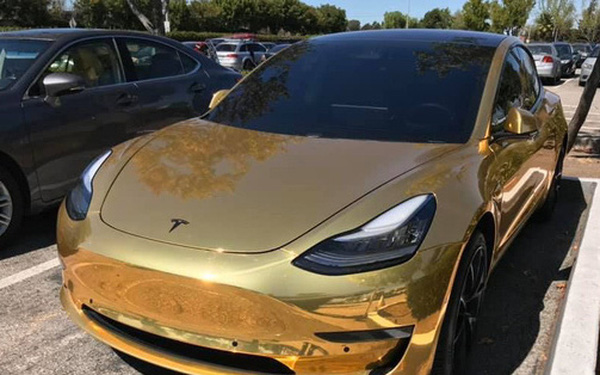
If VinFast enters the market, will the big guys have to ‘pay’ for VinFast?
THE BILLION DOLLAR TRADE MARKET TESLA DOWN
It is a market for buying and selling carbon credits .
You did not hear wrong! The unfamiliar concept, which is often found applied to university subjects, is the “golden egg” for Tesla today.
So what are carbon credits? Why does it sell and make so much profit for Tesla?

Carbon credits are like Tesla’s ‘golden chicken’. Photo: Electrek
In this article, we will mainly focus on carbon credits in the auto industry, especially in the US market.
To make it easier to imagine, you can think of each carbon credit like a ‘voucher’.
Each ‘coupon’ is equivalent to 1 ton of carbon emissions that businesses are allowed to emit into the environment.
The government will give each manufacturer a certain amount of ‘stamps’ based on the scale of production or the emissions their cars emit.
Based on the target of reducing greenhouse gas emissions, the government will reduce the amount of ‘stamping’ that manufacturers receive every year.

The United Nations Framework Convention on Climate Change opens the door to the carbon exchange market. Photo: Katsumi Kasahara/AP Images
This means that manufacturers are forced to cut greenhouse gas emissions each year. Assuming the manufacturer cannot meet this requirement, they will be penalized. The amount of the fine will also be based on the number of ‘stamps’ that correspond to the amount of carbon they use over the limit.
In fact, if there is a manufacturer A that uses more than the limit, there will also be a case where producer X does not use all of his ‘stamping’. In this situation, the government allows X to resell to A the excess ‘stamps’.
This sale is completely legal, and the fee for each ‘stamping stamp’ will depend entirely on the mutual agreement between A and X.
However, there will also be cases where X bids more than the penalty A has to receive, then A will definitely choose to be penalized instead of buying ‘stamping’ from X, or simply finding a manufacturer. others have excess.
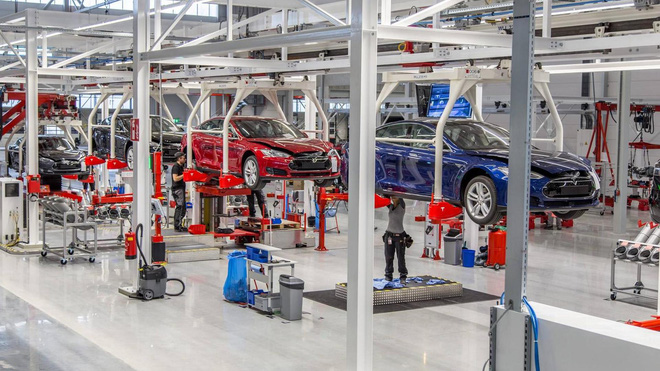
Inside the Tesla factory. Photo: Motor1
Back to the reality of the American auto industry, Tesla is a manufacturer X as above, and of course there are many other manufacturers who also have a surplus of ‘samples’. Producers with excess emissions will play the role of A.
Tesla as a manufacturer of 100% pure electric vehicles, they hardly use the number of ‘stamping stamps’ that the government issues. Those ‘stamps’ were all taken by Tesla to ‘exchange’ with other manufacturers, bringing huge profits to Tesla.
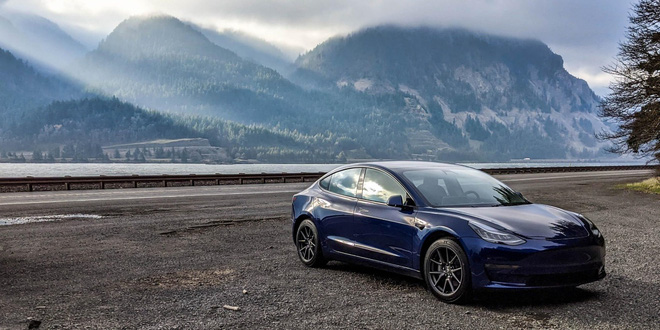
Tesla Model 3 is Tesla’s best-selling model. Photo: Teslarati
If you can’t imagine how terrible the “super profit” from selling those carbon credits is, let’s take a look at the following example.
There was a lady selling porridge at a crowded market. Her porridge burden is always busy with people coming in and out, everyone is whispering with an unforgettable taste but the price is extremely ‘stable’.
To make that bowl of porridge, she had to invest a lot of effort, as well as use many expensive ingredients. Assuming each bowl of porridge costs 30,000 VND, then all input costs have reached 20,000 VND, only 10,000 VND is the profit.
There will be an opinion that if she wants to “get rich quickly”, she should increase the price to increase profits. But, the truth is that no matter how much the price increases, she always loses a certain input material cost of 20,000 VND, not to mention whether she can sell well at a high price?
What about Tesla’s ‘voucher’? Tesla didn’t lose a dime when it sold. That is, sell for as much as the profit earned. 100% profit margin!
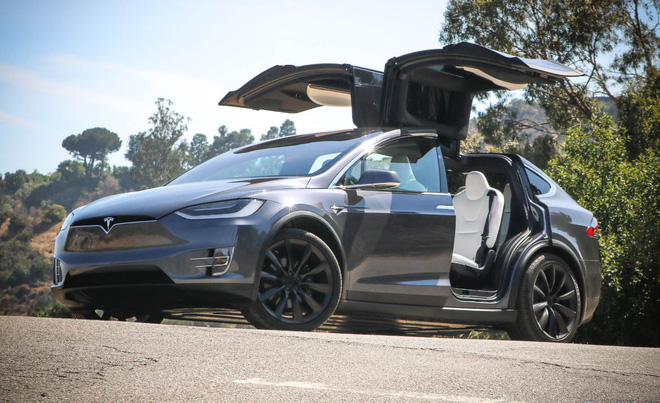
Tesla Model X SUV with a bird-wing opening rear door
Of course, in the market, Tesla is not the only manufacturer with electric vehicles, but when it comes to the leading scale with more than 500,000 units sold globally (first in the world in total pure electric vehicle consumption), Tesla will receive the most credits among all-electric vehicle manufacturers. And at the most, Tesla ‘dominates’ this market for carbon credits, at least in the US.
HOW MUCH MONEY DOES TESLA CREDIT CREDIT?
The answer is billions of dollars in just the past few years.
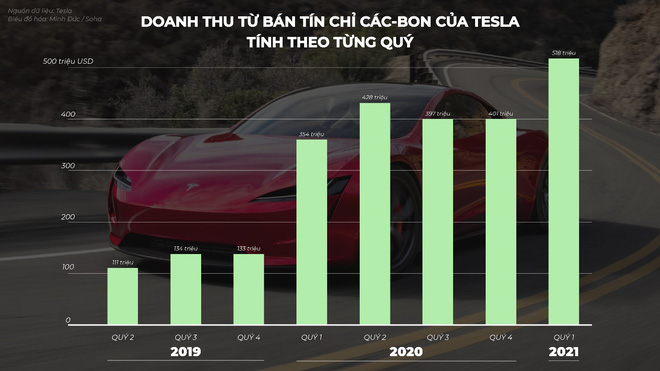
The numbers in the chart above are all disclosed by Tesla in its quarterly financial reports.
Looking at the chart, we can see that the amount of money Tesla earns from selling carbon credits is showing signs of increasing sharply. If in the fourth quarter of 2019, Tesla earned $ 133 million from the sale of credits, only by the end of three months, the amount of money Tesla brought in from this source had reached $ 354 million, more than 2.6 times.
If calculated for the whole year, the total revenue from the sale of Tesla’s carbon credits in 2019 is about 378 million USD, this figure in 2020 has been nearly 5 times – 1 billion 580 million USD.
Obviously, with this way of making money, Tesla has easily brought in billions of dollars without spending too much effort .

The carbon credit exchange is not as ‘dark’ as it seems. Photo: Forestry University
BUYING AND SELLING CARBON CREDIT BENEFITS OR HARMFUL?
For example: if the exchange is like this, the amount of gas emitted will not decrease, when one person emits, someone else will ‘receive it’? This thinking is absolutely true, but only for a certain time. It should be remembered that the number of carbon credits that producers receive will periodically decrease. It follows that the average emissions will decrease over time on that country’s roadmap.
Or is this way of ‘environmental protection’ being exploited by parties, bearing the color of trade, and should we oppose this way? In response, I would like to confirm that the trading or exchange of carbon credits is a recognized government and international practice, and this practice is not harmful, even brings many benefits.
In Europe, carbon trading has been going on for up to 15 years. This transaction is similar to the way car companies do, that is, businesses that emit more than the prescribed level will have to buy credits from surplus businesses, or buy credits from other places. , for example buying carbon credits from a plantation.
Increasingly tightening emissions limits will have an impact on both emitters and carbon receivers.
On the business side, they will be forced to innovate and improve machinery to minimize emissions. This directly promotes industrial development to a higher level with environmental protection.
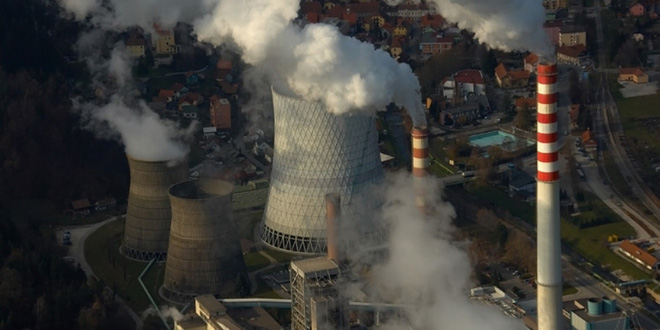
Thermal power plants are one of the major carbon emitters. Photo: Bankwatch
On the side of the carbon receiver, for example, clean energy businesses such as wind power, solar power, when they have more revenue from the sale of carbon credits, they will have more resources to continue their activities. continue to renovate, upgrade, replace or even research to increase efficiency, thereby further promoting the production of clean energy.
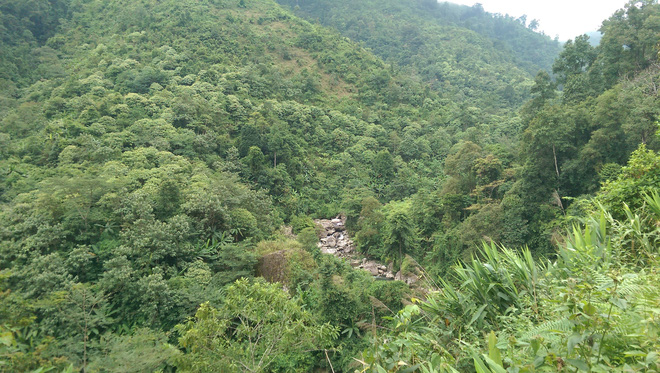
Vietnam is one of the countries with forests that absorb more CO2 than they emit
In Vietnam, there have been many studies to pilot the application of the carbon index calculation mechanism. Large emitters such as coal power plants, cement plants will have to find ways to reduce their emissions, perhaps by improving technology, or also by acquiring carbon credits, such as buying from households, companies or businesses that plant forests.
According to current regulations, households, organizations or individuals that are allocated forest land by the State will receive 300,000 VND/ha for forest protection and development costs. If emission enterprises pay for carbon credits, it is clear that those who are protecting forests day and night will have more income as well as motivation to continue to protect and develop forests.

The ‘seed bomb’ is a good way to effectively regenerate forests. Photo: Dak Lak Newspaper
The Vietnam Forest Owners Association believes that if the carbon index is applied, our country’s forest growers can earn up to 1,500 billion VND more per year. Even Vietnam has the ability to sell carbon credits abroad, earning tens of millions of dollars more…
Back to the problem of Tesla, when they have a large source of revenue, it means that they have more money for research and new improvements to make the product better and better, meeting the expectations of consumers.
WHO IS THE PEOPLE BUYING TESLA CREDIT CREDIT?
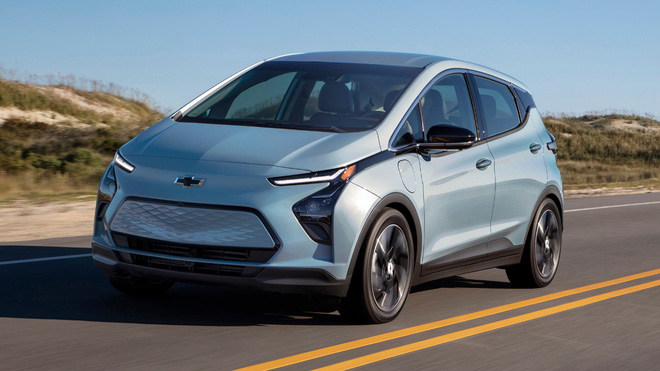
Chevrolet Bolt is also a best-selling electric car in the US. Photo: MotorTrend
Out of countless mysterious buyers, only Fiat made this deal public with Tesla. Information released by Fiat shows that it has an agreement to buy back Tesla’s carbon credits until the end of 2023 for a terrible price: $ 1.1 billion.
In addition, documents filed in court in 2019 also show that GM is also a customer of Tesla, although GM also has a hot-selling electric car, the Chevrolet Bolt.
Even according to Autocar’s own information source, the world’s oldest vehicle magazine, most car manufacturers participate in buying carbon credits , differing in the method and source of ‘exchange’. .
When it comes to electric vehicle development, when companies are not yet capable or when the market has not yet accepted to completely turn to electric cars, as a 100% electric vehicle manufacturer, Tesla is like “sitting on the wheel”. ” collecting money from the big guys still struggling with the carbon ‘stamping’ .
VINFAST TO THE USA HAS “SIT IN THE TEAM” WITH TESLA OR NOT?
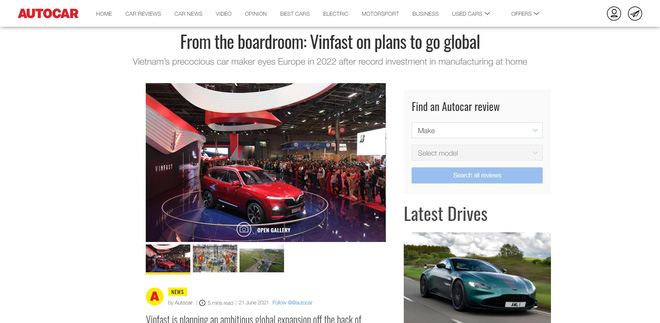
Autocar recently reported on the ‘miracle’ VinFast is now reaching the world
In theory, there is a possibility for VinFast to sell carbon credits in the US. However, there will be a lot of work to be done in order to do so. First , VinFast needs to become a car manufacturer in the US. That means VinFast needs a factory in the US.
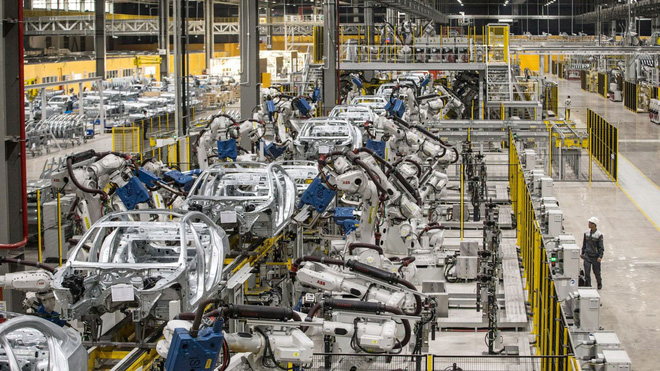
Inside VinFast’s production plant in Vung Ang, Hai Phong
On VinFast’s official information channels, information about VinFast’s intention to build a factory in the US has never been announced. However, in an email reply to Bloomberg, VinFast CEO Thai Thi Thanh Hai said that VinFast plans to build a factory in the US.
This information was published by Bloomberg in early March this year and then was reported by many Vietnamese newspapers and media channels.
Currently, VinFast has opened a research center in San Francisco with 50 employees, and is preparing to start selling cars in California in 2022.
Next , as mentioned above, the US government will base on the scale of production and the corresponding amount of carbon credits. It can be inferred that after VinFast builds a factory in the US, VinFast needs to produce and sell cars produced from this factory. Similar to Tesla, the larger the scale, the more carbon credits VinFast will receive.
In fact, whether it produces electric cars or gasoline cars, VinFast will also be granted a certain amount of carbon credits. If selling gasoline cars, it means that VinFast is using those credits, and if only selling pure electric cars, VinFast does not need to use them.

Interior design on the VinFast VF e35 will enter the US. Simulation image: VinFast
There is no document specifying the exchange rate per carbon credit. The price of the carbon credit exchange will depend entirely on the agreement between the two parties. So, more or less, if there are excess carbon credits and sell them, the proceeds will help VinFast have more resources to produce more quality products, enough to compete fairly with big names. from strong global brands.
But as said, it is in theory, besides, if it is granted a carbon credit, will VinFast want to sell it or not?

The 7-seat SUV VinFast VF e36. Simulation image: VinFast
It is expected that in September, electric car models VinFast VF e35 and VinFast VF e36 will receive deposits in Vietnam, handing over cars from February 2022. For the US, Canadian and European markets, orders will be accepted from November 2021 and delivery will begin in June 2022.
Let’s wait and see!
Source : Genk
